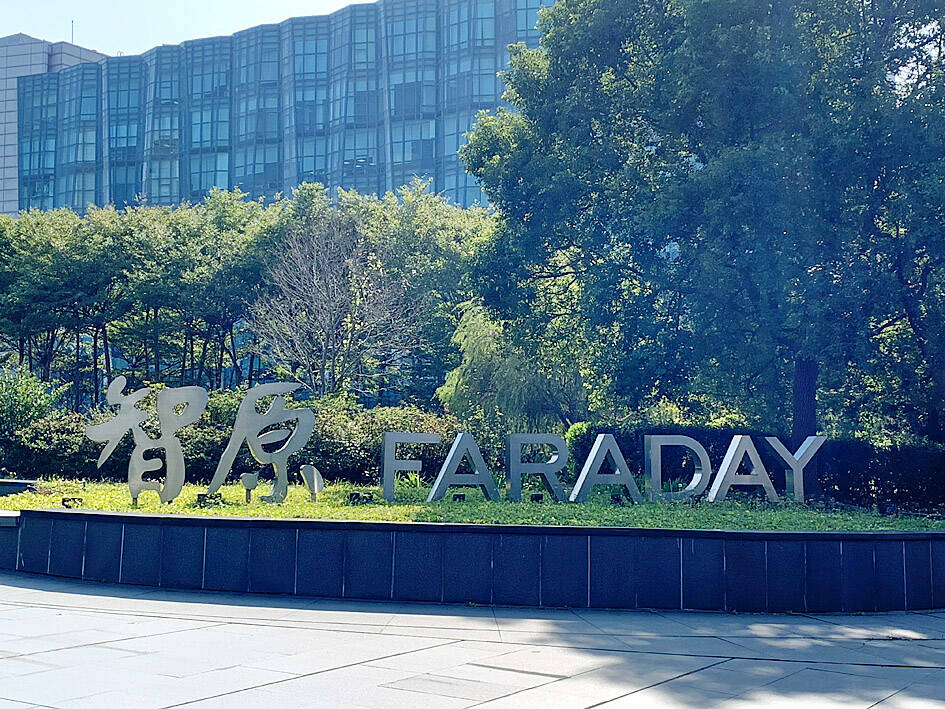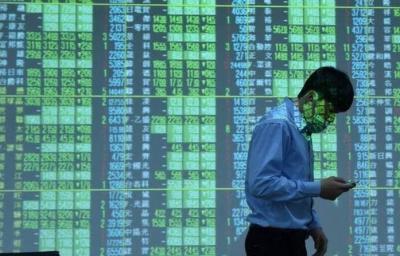Faraday Technology Corp (智原科技), which designs application-specific ICs, on Tuesday reported better-than-expected profit for last quarter, saying that it is on track to achieve its revenue growth target of more than 60 percent this year, due to resilient demand.
Net profit was NT$599 million (US$18.59 million), up 83.4 percent year-on-year, but down 9.3 percent quarter-on-quarter. Earnings per share were NT$2.41, up from NT$1.31 a year earlier, but down from NT$2.66 the previous quarter.
Growth momentum would extend into next year, bucking the macroeconomic and semiconductor industry’s downtrend, the firm said.

Photo: Grace Hung, Taipei Times
While its microcontroller unit business faced inventory adjustments over the past two quarters, the effects eased last quarter as the sales exposure of microcontroller units fell to 7 percent of the company’s total revenue last quarter, it said.
Some customers have paid in full for microcontroller unit deliveries, or half the amount, it added.
The Hsinchu-based company said it is positive about next year’s growth, due to an increase in its new design projects and growth momentum for major applications, including 5G, switches and automotive applications.
“Although most semiconductor companies are conservative about next year’s outlook amid growing macroeconomic uncertainties, Faraday will continue to maintain its growth momentum,” Faraday president Steve Wang (王國雍) told an earnings conference.
As the company designs chips mostly used in energy management — such as smart meters, artificial intelligence of things for smart manufacturing, automotive products and solar energy — its business is less vulnerable to changes in the macro environment and geopolitical tensions, Wang said.
The US’ newest semiconductor export controls on China should have no impact on the company’s business, but Faraday is closely monitoring to see whether there are any ripple effects, Wang said.
Nonetheless, the Chinese market has relatively lower order visibility, compared with the US, Europe and Japan, he said.
Faraday’s growth next year would also be aided by increased adoption of more advanced technologies, including 28-nanometer and 40-nanometer chips, Wang said.
He added that about 90 percent of new application-specific ICs are to be made on the two process nodes next year.
Revenue this quarter would increase by a low single-digit percentage, supported by Faraday’s non-recurring engineering business, from NT$3.24 billion last quarter, while revenue from intellectual property royalties and application-specific ICs would drop slightly this quarter from a quarter earlier, the company said.
Faraday charges non-recurring engineering costs and intellectual property royalties for helping customers design new chips. Customers usually pay the non-recurring engineering costs before the product is manufactured.
Faraday’s non-recurring engineering business accounted for 13 percent of its revenue last quarter, compared with 75 percent generated from its application-specific ICs business, it said.
Gross margin would drop slightly this quarter, compared with 48.6 percent last quarter, it said.
Wang said that he expects the company to have a good start next year, as revenue would be higher next quarter than this quarter.

SELL-OFF: Investors expect tariff-driven volatility as the local boarse reopens today, while analysts say government support and solid fundamentals would steady sentiment Local investors are bracing for a sharp market downturn today as the nation’s financial markets resume trading following a two-day closure for national holidays before the weekend, with sentiment rattled by US President Donald Trump’s sweeping tariff announcement. Trump’s unveiling of new “reciprocal tariffs” on Wednesday triggered a sell-off in global markets, with the FTSE Taiwan Index Futures — a benchmark for Taiwanese equities traded in Singapore — tumbling 9.2 percent over the past two sessions. Meanwhile, the American depositary receipts (ADRs) of Taiwan Semiconductor Manufacturing Co (TSMC, 台積電), the most heavily weighted stock on the TAIEX, plunged 13.8 percent in

A wave of stop-loss selling and panic selling hit Taiwan's stock market at its opening today, with the weighted index plunging 2,086 points — a drop of more than 9.7 percent — marking the largest intraday point and percentage loss on record. The index bottomed out at 19,212.02, while futures were locked limit-down, with more than 1,000 stocks hitting their daily drop limit. Three heavyweight stocks — Taiwan Semiconductor Manufacturing Co (TSMC, 台積電), Hon Hai Precision Industry Co (Foxconn, 鴻海精密) and MediaTek (聯發科) — hit their limit-down prices as soon as the market opened, falling to NT$848 (US$25.54), NT$138.5 and NT$1,295 respectively. TSMC's

ASML Holding NV, the sole producer of the most advanced machines used in semiconductor manufacturing, said geopolitical tensions are harming innovation a day after US President Donald Trump levied massive tariffs that promise to disrupt trade flows across the entire world. “Our industry has been built basically on the ability of people to work together, to innovate together,” ASML chief executive officer Christophe Fouquet said in a recorded message at a Thursday industry event in the Netherlands. Export controls and increasing geopolitical tensions challenge that collaboration, he said, without specifically addressing the new US tariffs. Tech executives in the EU, which is

In a small town in Paraguay, a showdown is brewing between traditional producers of yerba mate, a bitter herbal tea popular across South America, and miners of a shinier treasure: gold. A rush for the precious metal is pitting mate growers and indigenous groups against the expanding operations of small-scale miners who, until recently, were their neighbors, not nemeses. “They [the miners] have destroyed everything... The canals, springs, swamps,” said Vidal Britez, president of the Yerba Mate Producers’ Association of the town of Paso Yobai, about 210km east of capital Asuncion. “You can see the pollution from the dead fish.